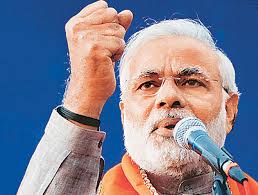Last year in May, when Indian Prime Minister Narendra Damodardas Modi was assuming his office, nobody knew what his foreign policy would look like. Since then, his speed and work-obsession has kept analysts and his counterparts all over the world guessing.
During the first year in office, he has regularly strengthened his diplomatic credentials, pulling sorts of one coup after the other; from getting the heads of SAARC nations attend his oath-taking ceremony in New Delhi to inviting US president Barack Obama as the Chief Guest of India’s Republic Day pomp.
Above all, in the summits that he has participated, Narendra Modi has consistently pursued India’s global superpower ambition, a dream his party Bharatiya Janata Party has harbored more openly since its founding than any other Indian political outfit. Modi seems to believe that the path to realizing this dream travels through nuclear supremacy in the first place.
India has always remained a nuclear power. Its 22 atomic reactors distributed all over the country produce about 5500 MW electricity and is the fourth largest source of energy. India possesses a sophisticated nuclear arsenal, capable of 120 nuclear weapons including bombs and warheads. It is believed to haves masses of separated reactor-grade plutonium, enough for approximately 1,000 plus nuclear weapons.
India has never signed the 1968 Nuclear Non-Proliferation Treaty, which deprived it of the transfer of technology from other nuclear sophisticated countries. But under Narendra Modi, this seems to be changing.
The foundation was built in 2008 through the Civil Nuclear Cooperation Agreement with the United States. Modi has been able to give it an operational face.
In January this year, during the India visit of US president Barack Obama, the two countries announced a ‘breakthrough’ on the stalled nuclear cooperation. India’s Ministry of External Affairs (MEA) on February 8 said that the administrative framework was agreed between the two countries to ensure the implementation of the deal. Two highly significant US companies- General Electric and Westinghouse Electric- are in queue to set up nuclear power plants in India now.
Earlier in September 2014, Modi pulled off a more favorable nuclear cooperation agreement with Australia, during Australian Prime Minster Tony Abbot’s visit to India. Abbot had repeatedly referred to India’s “model behavior” as the bedrock of trust between the two countries leading to the agreement. The implied meaning was that the world powers today look for and are ready to trust responsible ‘regional actors’ to share global responsibilities.
Indian MEA later confirmed in a statement that Australia would now be a long-term uranium supplier for India’s nuclear power plants, although it never said anything about the amount and the time-frame of such supply. In return, Indian companies like the Adani Group are well on the way of investing over $ 20 billion in the Australian energy sector.
Japan’s pacifist nuclear policy didn’t bring much to India despite high level of political will on display in both sides. The two countries signed an agreement on nuclear cooperation but details have bumped the way particularly in Japanese side.
Canada has now agreed to walk the road for India that Japan dithered to move in. Indian Prime Minister Narendra Modi and his Canadian counterpart Stephen Harper this week signed the most explicit and significant nuclear deal in Canada. Both countries did not only let go the nuclear discord persisting since 1976, which had kicked off after India used Canadian technology to develop nuclear bomb, but also signed a deal under which Canada would supply over 3000 tonnes of Saskatchewan uranium for the next five years to fuel India’s atomic reactors. This supply, worth $ 350 million, would come from Canada’s Cameco Corp, the third largest uranium producer of the world.
At home, Narendra Modi wants to establish additional 35 nuclear reactors in the next 15 years, producing 63000 MW of electricity, almost five times up from the current level. The technology that comes along will give India the leverage to achieve high nuclear sophistication, potentially leaving China far behind.


